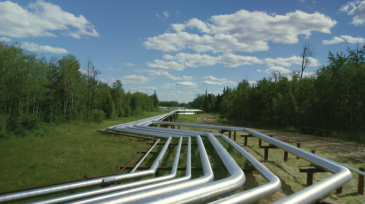SAGD
-
When oil demand vaporized, oil sands producers cut 300,000 B/D of production from wells using steam injection to produce bitumen. It is a huge test of something they have long been reluctant to do—turn down in-situ production when prices plunge.
-
Steam-assisted gravity drainage (SAGD) performance in bitumen-recovery projects in Alberta is affected by geological deposits, reservoir quality, and operational experience.
-
The complete paper describes piloting the collection and analysis of distributed temperature and acoustic sensing (DTS and DAS, respectively) data to characterize flow-control-device (FCD) performance and help improve understanding of steam-assisted gravity drainage (SAGD) inflow distribution.
-
The complete paper presents an automated approach to optimizing placement of flow-control devices (FCDs) in SAGD well-pair completions.
-
This paper uses a simulation model to evaluate and compare the thermal efficiency of five different completion design cases during the SAGD circulation phase in the Lloydminster formation in the Lindbergh area in Alberta, Canada.
-
The complete paper provides an overview of the development of fiber-optic sensing for steam-assisted-gravity-drainage (SAGD) applications, including a review of more than 10 years of work in development and field applications in western Canada.
-
The authors discuss a new way of extracting deformation information from radar imagery, contributing to improved accuracy of InSAR surface-elevation monitoring.
-
A Canadian research organization believes the country’s oilfield technology could help another energy sector drive down its costs and it may work out for heavy oil producers too.
-
Distributed temperature sensing (DTS) is the most common fiber-optic measurement used for steam-assisted-gravity-drainage reservoir monitoring.
-
An even temperature conformance along the length of the horizontal well is key in maximizing steam-assisted-gravity-drainage (SAGD) production rates.










